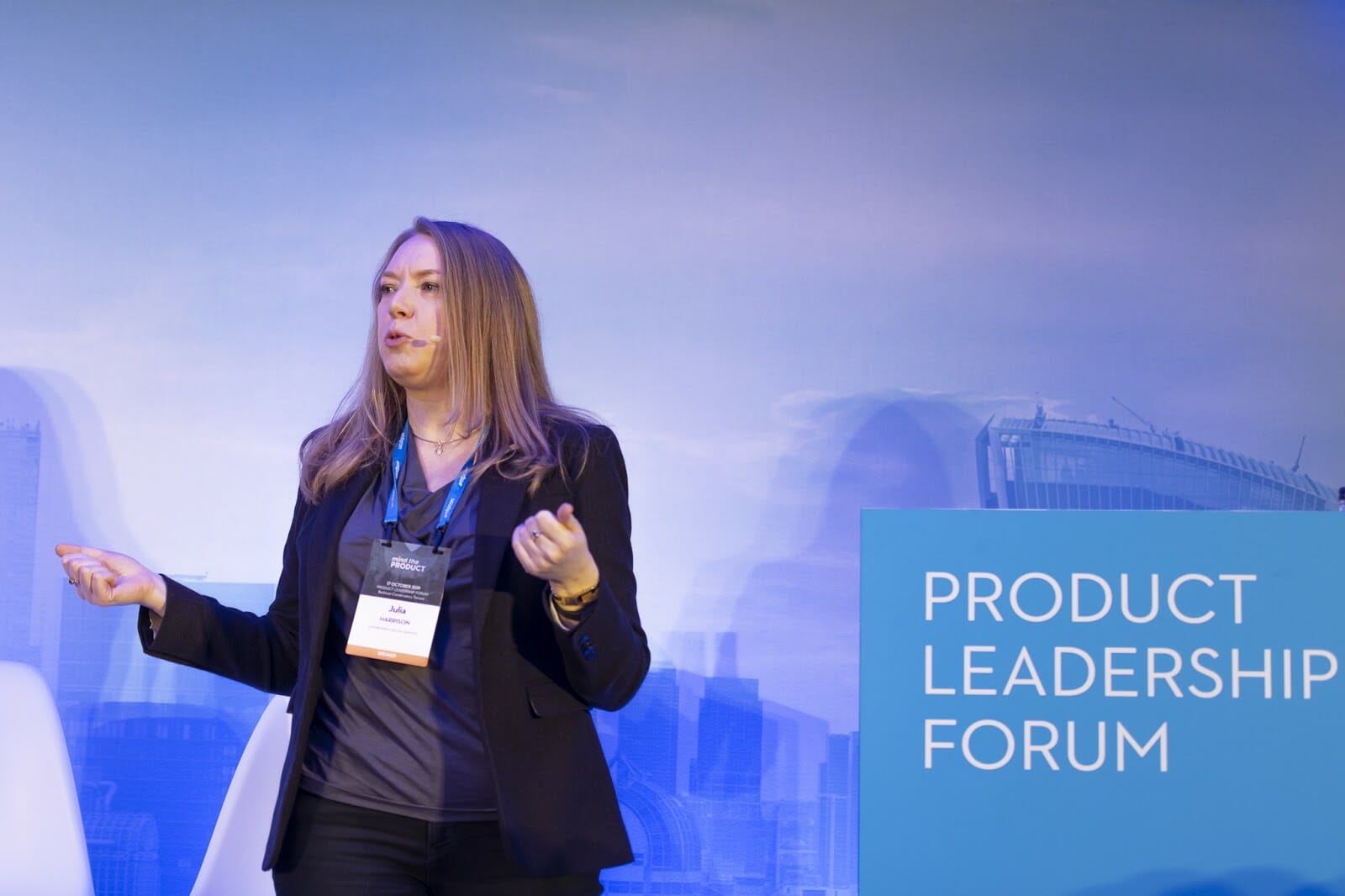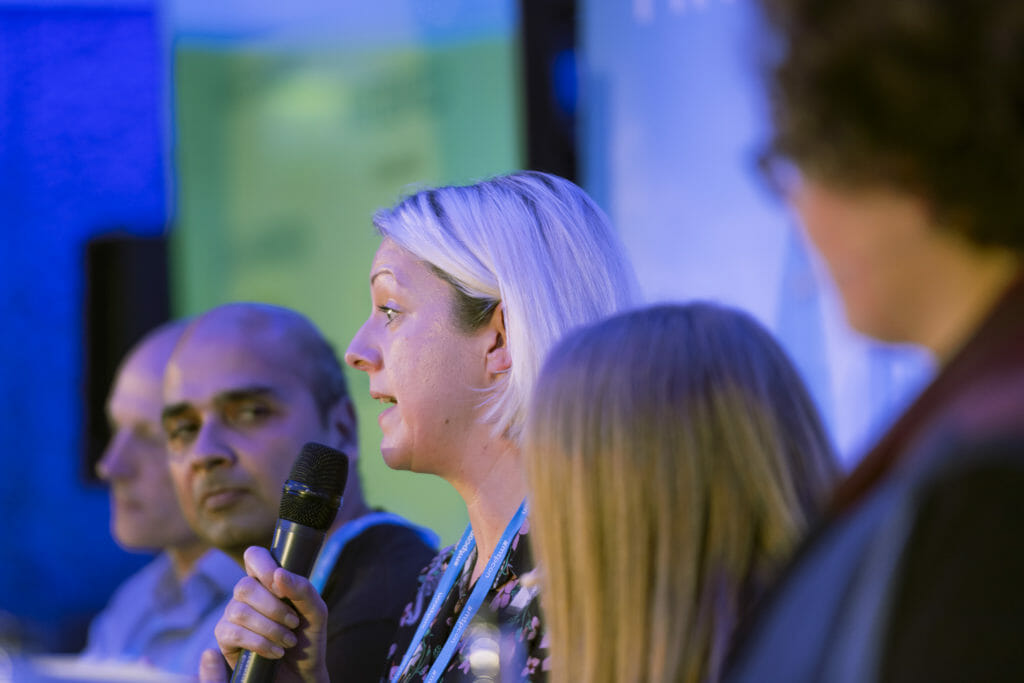Insights from the #mtpcon Product Leadership Forum – Part 3 [Mind the Product]

In Part 3 of our Product Leadership Forum recap, you can see an overview of the remaining insights from this year’s #mtpcon London Product Leadership Forum (if you missed them, you can take a look back at Part 1 and Part 2).
(All of the issues discussed were under the Chatham House rule, so you won’t see any direct quotes, but everything reported here comes from the most forward-thinking people in the world of product.)
Leading Smart People
Product leaders worry themselves by thinking about things such as:
- “I should know all the answers”
- “The team won’t respect me if I’m not technical”
- “I’ll sound stupid if I ask questions”
- “I’m an imposter here”
Product teams often attract people who are used to being the smartest people in the room. Product leaders often find themselves in their position because they were the best of a bunch of product managers.
However, to be an effective leader, it’s no longer your role to be the smartest person in the room. It’s to help build the overall capability of the people, system, and portfolio you have responsibility for.

Autonomy, Mastery and Purpose
Daniel Pink’s three motivations show what you need to set up to help your team be truly effective. Give people flexibility. Help them get better at their roles. Show them why they should turn up to work each day. Inspiring visions and strategies are particularly important when giving people a purpose.
Leading Through Respect
You’re likely leading more people than you manage. This is leading by permission. To do so, you need to add value by bringing a different perspective to conversations. This doesn’t mean you need to have the same skill sets as those people – in fact, it’s usually best if you don’t.
How to ask Powerful Questions
Coaching is a fantastic way to build your leaders’ capabilities. It helps them to look at things in a new way and draws out information and behaviours that people didn’t know they had. This behaviour extends to those people you lead, rather than just the ones you manage.
Product managers naturally ask some of these difficult questions of their team:
- If we leave it, will it get worse over time?
- Do we know what good looks like?
- How will we know when we’re done?
- Is that assuming everything works first time around? When was the last time that happened?
- What’s the biggest risk? How can we learn about that first?
- If we do that, will you feel proud of it?
How to Listen Well
Questions are only powerful in the right context. You have to understand your team through all of the signals they send you to make sure you coach them in the right way at the right time.
What Does Good Look Like?
We often don’t know the answer to the problems we face. We normally have a few ideas about what it would feel like if we succeed though. If you want to build your team’s autonomy, then get them to decide for themselves what the indicators of success will be. These can often be built up into a set of principles for the team to work by, on any project.
Principles Build Autonomy
To create safety with your teams, a framework can build confidence. You’re able to say to your teams that if you come up with a solution that meets these principles, then nothing will be your fault. If it goes wrong, it’ll be the fault of the principles rather than the individual or team.
Some examples of these principles include:
- Optimise for small payloads
- API first
- Be consistent, not uniform
- Doing the right thing is always more important than following the process
- It’s not the users’ job to tell us what they need, it’s our job to find out

Coaching Smart People
Help People Find Ways to Have Difficult Conversations
Through coaching, we can help people to buy into and understand the benefits of radical candour. With your own teams, you can then drive a culture of constant feedback which will help them improve their own outputs. High-performing teams know how best to give this feedback depending on the individuals involved – and understand that the same approach isn’t right for everybody.
Guiding Principles Should Drive Performance
As a leader, you should be able to demonstrate to every team member what your principles mean. This usually means showing examples of when they’re being adhered to and when they aren’t. These should be nuanced and open to discussion but should be clear at the end what you’re looking for.
Peer Coaching Helps you Practise
Setting up coaching networks in your own organisation is a great way to develop your skills. It drives conversations you wouldn’t normally have and lets you learn in a safe space.

Building Trust is Hard
A key component of coaching is to build trust quickly between the people involved. A few steps you can take to do this are:
- Show your own vulnerability with the people you’re leading. If you’ve had a bad night’s sleep, tell the person you’re coaching that it might be better to reschedule.
- Continually tell people that what you discuss is confidential and won’t leave the room under any circumstances.
- Finally, you need to get them to build trust in the organisation. A good coaching question for this is to ask someone to imagine if their ideas were understood by the organisation in the spirit in which they were meant. Then see what they put on their backlog or roadmap.
Active Listening Should Happen Even When People Aren’t Talking
When people are thinking, they often won’t look directly at you. This isn’t a time for you to check your watch or look away – that will immediately break the trust between you. If you can hold their gaze, or show that you’re engaged but without staring at them, it’ll make people more comfortable with thinking in front of you.
The post Insights from the #mtpcon Product Leadership Forum – Part 3 appeared first on Mind the Product.
Source: Mind the Product https://www.mindtheproduct.com/insights-from-the-mtpcon-product-leadership-forum-part-3/

Post a Comment